According to many agronomists, honeysuckle is a real find for gardeners. It is valued for its unpretentious nature, quick ripening of berries and increased immunity to pests and diseases. That is why this undemanding culture is so common in many areas. In this article, we will present such a shrub as real honeysuckle - a description of its appearance, useful qualities and care for this garden beauty.
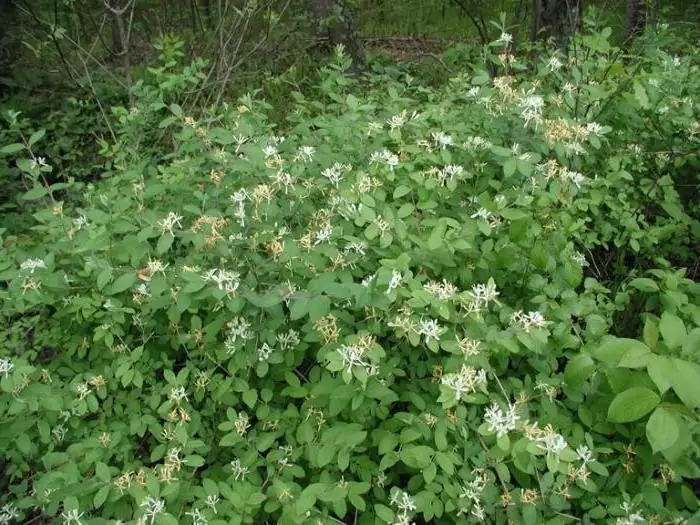
General information
The Latin name of this plant comes from osteum, which means "bone". This is due to the rather strong wood of the honeysuckle bush, which has long been used for the manufacture of gun ramrods, walking sticks and bones for counting. The Russian name "honeysuckle", according to etymologists, comes from the ancient Slavic "zhi" - "goat" and the word "silence" - that is, "milk". They explain this by the fact that the leaves of this plant are willingly eaten by goats and sheep, from which people have long received milk.
Varieties of Lonícera (honeysuckle) ina lot of nature. However, there are not so many edible species. The most promising varieties are Kamchatskaya, Ededobnaya, Turchaninova, etc. But there are also species whose fruits are not eaten, but, nevertheless, decoctions from leaves and flowers are widely used in folk medicine. For example, Tatar honeysuckle, blooming with pink fragrant flowers, grows wild in a vast territory stretching from the Volga to the Yenisei, as well as in the east of the European part of our country and in southern Siberia. However, the most common inedible species is real honeysuckle.
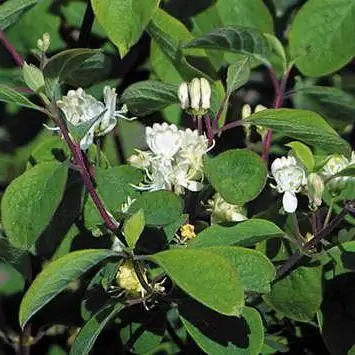
Variety description
People also call this species "forest" or "ordinary", but one name is probably known to many - "wolfberry". Real honeysuckle, the photo of which is presented below, is a low shrub with a grayish-brown bast bark, which exfoliates in longitudinal narrow stripes on old branches. The culture grows up to two hundred and fifty centimeters. Young shoots have a hairy appearance and greenish or reddish bark.
Forest or real honeysuckle has leaves up to seven centimeters long and five wide. They are narrow, entire and have an oval-elliptical pointed shape. The upper side of the leaf blades is dark green matte, and the lower side is grayish with densely pubescent soft hairs. The central vein is purple. Real honeysuckle gives bisexual smallish yellow-white flowers, collected two to four in inflorescences. They are quite fragrant. The sepals of the honeysuckleshallowly incised, glabrous or hairy. It is up to thirteen millimeters long and is pubescent on the outside.
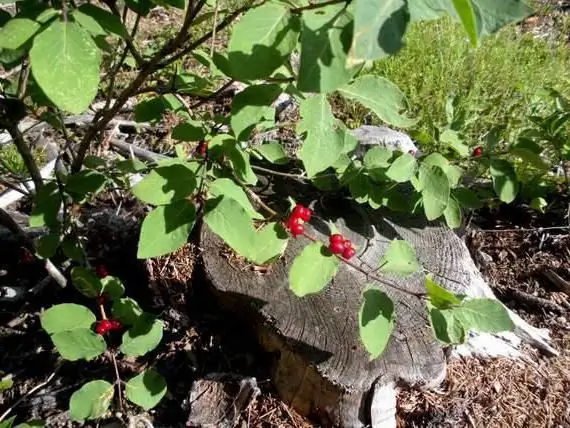
Fruiting
Specialists know this culture as Lonicera xylosteum. Real honeysuckle got its name in honor of the German physicist, mathematician and botanist Adam Lonitzer, although initially the physician and naturalist Carl Linnaeus wanted to call it honeysuckle - Caprifolium. The fact is that in gardens in Europe, this honeysuckle, which we better know as wolfberry, was most often grown. It blooms very early: in the period when the first leaves are just beginning to bloom on the trees. This happens around the middle of May. Its fruits ripen at the end of July. They have a round spherical appearance and a bright red color. Real or forest honeysuckle bears fruit only in the third or fourth year. Its berries grow at the ends of fruit-bearing branches, are often doubled and have a characteristic sheen. They are very bitter and contain harmful substances, and therefore are considered inedible. It is because of such poisonousness of the fruits that the plant in the people got its name "wolf berries".
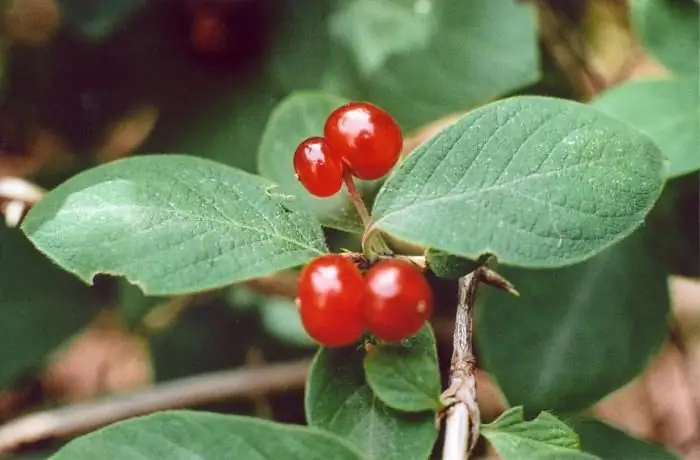
Distribution area
As a wild species, real honeysuckle is found in the northern, central and eastern regions of Europe, as well as in the Urals, the Caucasus and Western Siberia. It grows near rivers, in the undergrowth of coniferous or mixed forests, in ravines. The culture propagates mainly due to forest birds, which distribute berries. in heavily shadedconditions, the plant is practically unable to bloom, therefore it reproduces mainly vegetatively.
In recent years, real honeysuckle, the properties of which are described in this article, began to be found near residential buildings. It spreads most often in the following way: its branches lie on the ground and take root.
Real honeysuckle - useful properties
For medicinal purposes in folk medicine, only flowers, young shoots of stems and leaves are used. Despite the fact that the fruits of real honeysuckle have a rather bitter taste and are poisonous, nevertheless, homeopaths use them in very small portions. In order to treat certain diseases, flowers, leaves and stems should be harvested only in June. And the fruits are recommended to be harvested in September.

Honeysuckle real or forest has good wound healing, antibacterial and analgesic properties. Often this plant is used as a fairly effective emetic and laxative.
Often, real honeysuckle is used as an ornamental shrub for fences and decorating exterior walls. She tolerates a haircut, so she can be given a variety of shapes. In addition, this plant provides the bees with a lot of pollen and nectar. And its very hard, yellowish wood is widely used in small crafts.
Use in traditional medicine
Dried flowers and leaves of real honeysuckle have a very strong antiseptic and diureticimpact. Due to their healing and analgesic properties, they are widely used in folk medicine. Often, honeysuckle infusions are prescribed for the treatment of diseases of the urogenital organs and for edema of any origin. In homeopathy, this plant is used for diseases of the liver, nervous system, gallbladder, as well as for coughs or asthma.
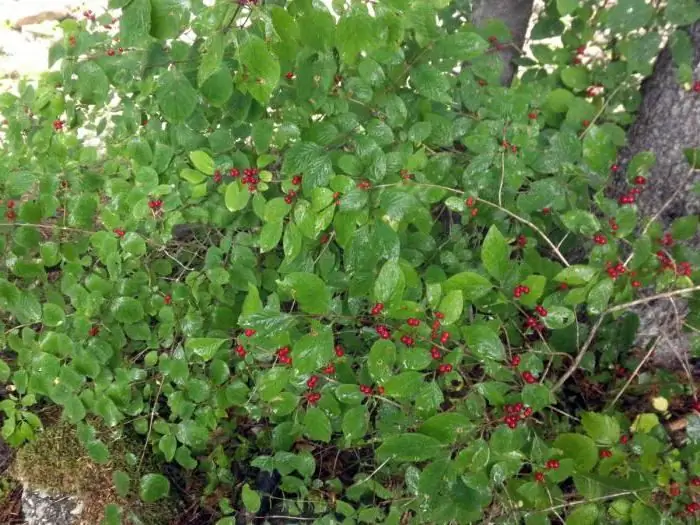
From colic and bloating, decoctions of leaves and flowers of real or ordinary honeysuckle are used inside. For the treatment of mastitis, tumors, abscesses and boils, poultices are made from pre-prepared raw materials. A concentrated decoction of flowers and leaves is considered very effective in the treatment of eczema and other skin diseases. An extract from the green mass of real honeysuckle is used in the pharmaceutical industry and is part of some cough mixtures.
Blank
For medicinal use in folk medicine, all parts of this plant are used, even poisonous fruits. Flowers, young shoots and leaves of all types of inedible honeysuckle are harvested during flowering. Young branches need to be broken off or cut off. This should be done from different parts of the honeysuckle bush, so as not to harm the plant and not spoil its appearance. Then the branches must be tied up in small bundles and hung to dry in some shaded and well-ventilated place. In this form, they can be stored throughout the winter. As needed, the right amount of raw materials is taken, crushed and a medicinal infusion is prepared.
Recipes
Whendiseases of the kidneys, severe pain in the gastrointestinal tract and edema, a decoction of the leaves and young shoots of this honeysuckle is used. To do this, pour a teaspoon of dry chopped raw materials with a glass of boiling water, boil in a water bath or over very low heat for twenty to thirty minutes. Then the broth should be insisted and filtered. It should be taken one tablespoon three or four times a day.
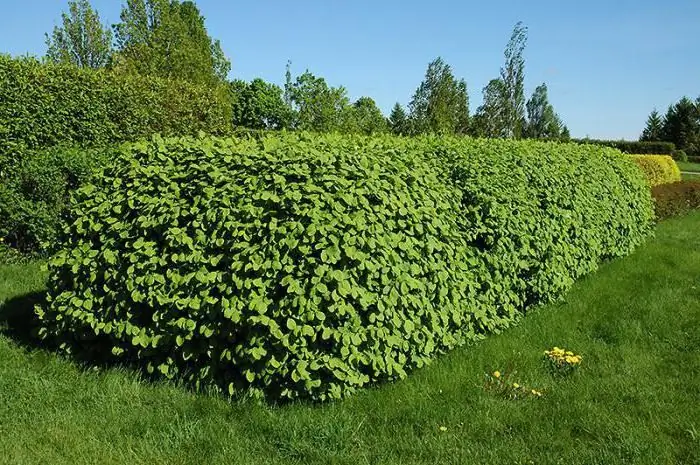
This decoction of leaves and young shoots, judging by the reviews, is good to use as a gargle during a sore throat.
Infusion of stems and leaves is recommended as a lotion for eye diseases. And fresh or dry crushed green mass of real honeysuckle can be applied to wounds, sprinkled with them to accelerate healing. To prepare an infusion of stems and leaves, pour boiling water over dry stems and leaves, leave for two hours, wrapped, and then strain.
It should be borne in mind that the use of real honeysuckle as a remedy should be done very carefully. Contraindication is individual intolerance to toxic substances contained in the plant.






